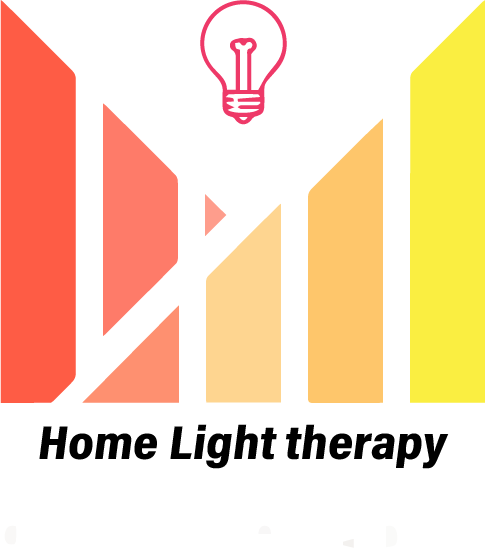
Red Light Therapy for Skin Health: Benefits, Science & Norway’s Need
Share
Red Light Therapy for Skin Health: Benefits, Science & Norway’s Need.
Photobiomodulation, often referred to as red light therapy, has moved well beyond wrinkle claims and wellness influencers (although here in Norway, there are many more popping up everyday). It now sits at the center of clinical dermatology!Why? Because it is backed by mechanistic insight into mitochondrial signaling, cytokine modulation, and skin regeneration. Yes it is true we don't know all the ways in which light interacts with various chromophores or water, but we know that it works!
Recent research confirms what early adopters have observed for years: specific wavelengths in the red and near-infrared range activate measurable changes in the skin—supporting collagen synthesis, accelerating wound closure, reducing acne inflammation, and improving outcomes in radiation dermatitis. Being Norway's longest light therapy specialist store (I originally started using them on my PT clients back in 2018) I have seen the benefits of red light therapy for skin and much more.
For those of us living in Norway, where UV levels drop to near-zero for months, we cover up from head-to-toe for months and skin barrier recovery slows dramatically, this isn’t an optional upgrade. Photobiomodulation may be one of the few tools that directly offsets the biological toll of low-light living. [Learn more about light therapy for Nordic winters]
Mitochondria, Not Moisturizer: How PBM Works Beneath the Surface
- ATP boost: Energy for cell repair and function
- Anti-inflammatory action: Downregulates IL-1β, TNF-α, IL-6
- Pro-collagen signaling: Stimulates fibroblasts to build type I and III collagen
- Wound modulation: Improves angiogenesis, re-epithelialization, and scar remodeling
| Wavelength (nm) | Target Chromophore | Primary Action |
|---|---|---|
| 400–470 | Porphyrins, flavins | Antibacterial, ROS generation |
| 620–660 | COX, melanin | Anti-inflammatory, collagen boost |
| 810–850 | Water, COX | Deeper tissue regeneration |
Clinical Results Backed by Trials—Not Trends (This is important to know - it isn't just marketing hype!)
Acne
- Reduces C. acnes via porphyrin photoactivation (415–470 nm)
- Red light (630 nm) reduces inflammation and sebum production
- Combined RL/BL devices outperform salicylic acid in reducing inflammatory lesions
Aging and Wrinkles
- 660/830 nm protocols increase collagen I + III
- Decrease in MMPs that degrade skin structure
- Trials report 30% wrinkle reduction in 8–12 weeks (3x/week)
Wound Healing
- PBM improves coagulation, inflammation, proliferation, and remodeling
- Upregulates VEGF, TGF-β, FGF, EGF
Radiation Dermatitis
- Reduces severity in breast and head/neck cancer patients
- 830 nm LEDs reduce pain, peeling, and inflammation
Why PBM Is Especially Relevant in Norway
- Low ambient UV: Nearly no UVB from October to March (There is some from the sky due to scattering but we don't get it because it is cold and we are wrapped up warm)
- Delayed wound healing: Cold-induced vasoconstriction impairs recovery
- Winter acne, eczema, barrier issues: PBM offers a counter-signal to darkness
Home vs. Clinical Devices
| Feature | Clinical Lasers | Home LED Panels |
|---|---|---|
| Coherence | High (focused) | Low (diffuse) |
| Depth | Deep (NIR 1064+ nm) | Mid-to-deep (660–850 nm, some with 1060nm) |
| Cost | High | Affordable |
| Accessibility | Appointment required | Daily, self-directed |
Choosing the Right Wavelengths
- Acne/sebum: 415–470 nm blue + 630 nm red
- Wrinkles/aging: 630 + 830 nm
- Wound healing: 660 + 810–830 nm
Look for devices that:
- Are CE certified
- List irradiance (40–100 mW/cm² is ideal)
- Use consistent monochromatic wavelengths
- Explore our [red light therapy panels](https://lighttherapy.no/collections/panel) or [portable devices](https://lighttherapy.no/collections/portable-and-specialist) for home use.
Final Thought
Red light therapy isn’t just safe. It’s biologically active, mechanistically sound, and clinically validated. If your skin is chronically dry, inflamed, or slow to heal in winter, photobiomodulation may be the most impactful change you can make this season.
Already supplementing vitamin D and syncing your circadian rhythm? PBM is the missing piece. [Discover how to integrate red light therapy into your routine](https://lighttherapy.no/blogs/english/pbm-daily-routine).
Ready to experience red light therapy?
(https://lighttherapy.no/collections/panel)
(https://lighttherapy.no/collections/portable-and-specialist)
Reference
Hernández-Bule, M.L., Naharro-Rodríguez, J., Bacci, S., & Fernández-Guarino, M. (2024). Unlocking the Power of Light on the Skin: A Comprehensive Review on Photobiomodulation. International Journal of Molecular Sciences, 25(8), 4483. https://doi.org/10.3390/ijms25084483

